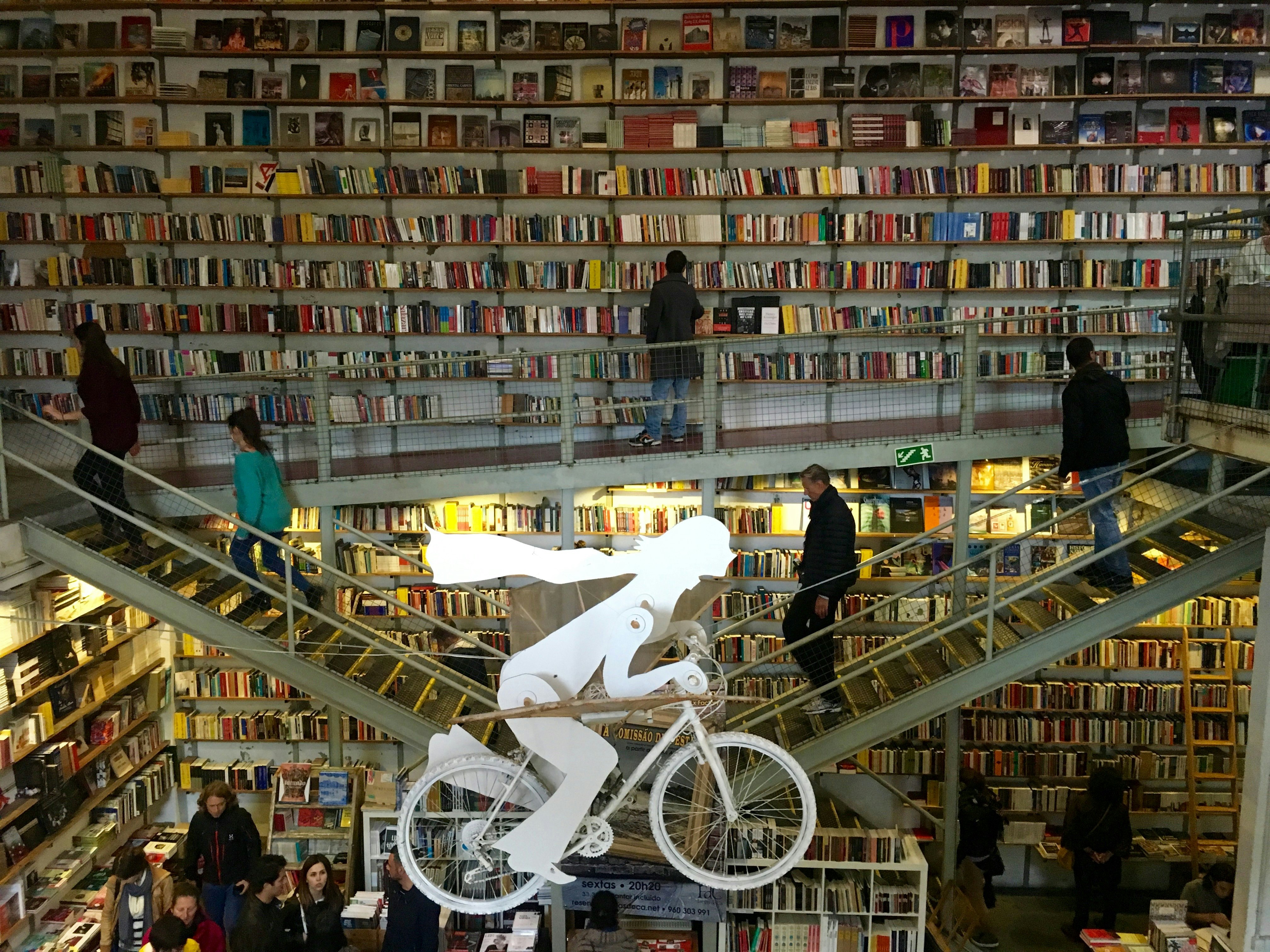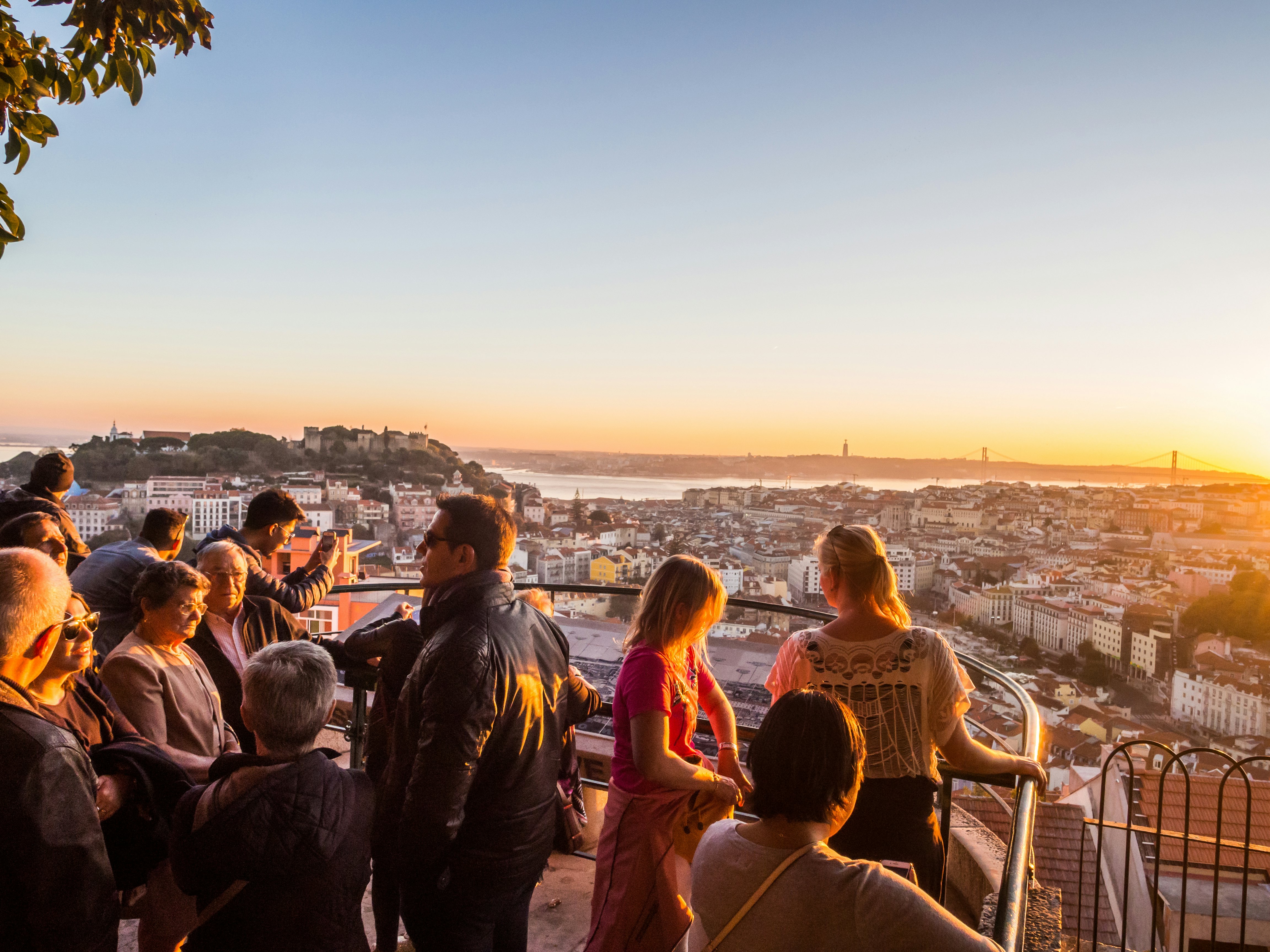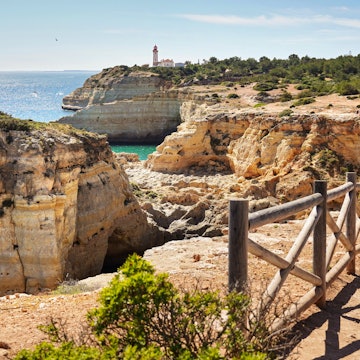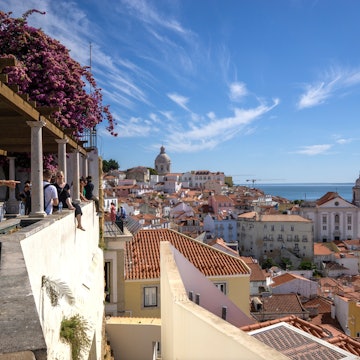

Blanketed over seven hills, Lisbon offers stunning vistas and steep walks. iStock
I bought an apartment in Lisbon back in 2015, at the start of the dual real estate and tourism booms that turned this long-overlooked city into one of Europe’s hottest destinations. I'm originally a native of Tucson, Arizona, though I’ve lived abroad since I was a teenager, mostly in Europe and Latin America. It was actually the rock bottom property prices that lured me here, but when I arrived I fell head-over-heels for the city.

I loved it for so many reasons: its sublime golden light; its defiantly old school way of doing things; its crumbling mansions, with their fancy tiles and caved-in roofs; and its Goldilocks’ size—neither too big, nor too small. Rather than just stashing my stuff in my Lisboeta pied à terre, I decided to move in as soon as possible. And of all the places I’ve ever lived, Lisbon is by far my favorite!
From my perch in the central Estrela neighborhood, I explore the fast-changing metropolis, checking out both the mushrooming hipster cafés and bars that cater to foreign visitors (which have injected a much-needed dose of excitement to the laid-back city), as well as Lisboeta classics, many of which have remained unchanged for decades, or even centuries.
When friends are visiting… I send them to the riverside neighborhood of Alcântara to soak up the feeling of old-school Lisbon, which is said to be Europe’s second-oldest capital, after Athens. Centuries of decline that followed Portugal’s heyday during the Age of the Discoveries, along with decades of stagnation in the 20th Century, under dictator António Salazar, conspired to preserve much of the city’s Old World charm. While the recent tourism boom is changing neighborhoods such as the Bairro Alto and the Chiado, Alcântara, with its hole-in-the-wall restaurants and omnipresent clotheslines, heavy with drying laundry, is a relic of the Lisbon of old. While you’re there, visit the Solar dos Nunes for an impeccable, high-end take on traditional Portuguese food. And if you overdose on local charm, head to the LX Factory, a cutting-edge hub for cool restaurants, shops and co-working spaces, housed in an industrial complex that once contained a textile factory and a newspaper printing press.
Read more: Best day trips from Lisbon

When I’m up for a big night out… my friends and I head to Social B, where the barkeep invents cocktails to fit your taste and mood. The bar is the latest venture of Mikas Morais, the nightlife impresario who’s behind the nearby A Tabacaria, which is also well worth a visit. And because, in Lisbon, all roads inevitably lead to LuxFrágil, we often end up at this multi-storey club to dance. It gets packed at around 4am most weekends.
When packing for a trip to Lisbon… I make sure I warn my visitors to bring comfortable walking shoes with a lot of grip. While transportation options abound – there’s a decent metro system, buses and trams, including the legendary Line 28E – the best way to see Lisbon is by walking. It’s relatively compact but be warned: Lisbon is built on seven hills – some of them extremely steep – and the sidewalks are made, mosaic-style, out of bits of limestone that have been worn to almost ice-like slickness in certain patches.

No trip to Lisbon is complete without… a visit to Livraria Bertrand, a sprawling bookstore (with a good selection of books in English) that holds the Guinness World Record as the world’s oldest continuously open book seller.
When I want to treat myself to a memorable dinner… I head to 100 Maneiras, the brainchild of Bosnian-born celebrity chef Ljubomir Stanisic. With its ever-changing tasting menu that draws on the flavours of Stanisic's Balkan homeland and of Portugal – where he arrived as a teenage refugee after fleeing the war in Yugoslavia – 100 Maneiras is one of Lisbon’s most unique dining experiences. Reserve as far in advance as possible, as the restaurant is small and fills up days or even weeks in advance.
For everyday eating out… Lisbon is a paradise, with one of the best quality-to-price ratios in Europe. My favourites include the Taberna do Calhau, a charming restaurant whose chef, Leopoldo Calhau, serves up authentic Alentejo fares with a twist. To indulge my sweet tooth, I make a beeline for Nannarella, a gelato place in Estrela that serves up scoopfuls of flavours including Fior de Basilico – vanilla infused with basil. The line often snakes out the door and down the block.
Read more: Top free things to do in Lisbon

When visiting with kids, you can’t go wrong with… a trip to the Oceanário de Lisboa, one of the world’s most unique and engaging aquariums.
When I need a culture fix… I visit the Museu Nacional de Arte Antiga, Portugal’s answer to the Louvre. The museum has an enviable collection of European masters, including Dürer, Andrea della Robbia, and a haunting triptych by Heronimous Bosche, as well as treasures from Portugal’s former colonies, which once stretched from Brazil to East Asia. Don't miss the magnificent Namban Folding Screens, which depict the Portuguese arriving in Japan.
If I'm still hungry for culture and have a bit more time… I look a further afield to the Palácio dos Marqueses de Fronteira, a 17th-century mansion near the Lisbon Zoo. The complex is worth the visit for the extravagant gardens and abundant tilework alone. The 13th Marquis de Fronteira and his family still live on the property, meaning visits are exclusively by guided tour and you must call ahead to reserve (don’t go by the hours posted on Google).
Also far from the madding crowd is the Museu Nacional do Traje, a little-known collection of Portuguese fashions spanning centuries, that’s housed in a restored mansion set in sprawling wooded grounds.
Read more: Highlights of Lisbon
To pick up a gift (for others or myself)… the best one-stop shop is A Vida Portuguesa, a nostalgic celebration of all things Portuguese. At this gorgeous store, you can find everything from embossed leather clogs – part of the traditional folk costumes of northern Portugal – to embroidered tea towels, Bordalo Pinheiro ceramics, old-school toothpaste and fragrant soaps by Claus Porto.
The store’s newest location, in the up-and-coming Intendente neighbourhood, has something for everyone on your souvenir list – including you. Another great place for gifts is Companhia Portugueza dos Chás, where you can stock up on loose-leaf teas sourced by the charming owners from around the world.
When I want to lose myself… I find solace in the Jardim Botanico, a verdant oasis tucked into one of Lisbon’s trendiest neighbourhoods, Príncipe Real. If I feel peckish, I head to the Pastelaria Sao Roque, which has been serving up typical Portuguese pastries for decades.
You might also like:
A food lover’s guide to Lisbon
From Lisbon with love: the best city spots for romance
Beyond Lisbon: where to go in central Portugal
This article was first published in December 2019, and was last updated in March 2020.















